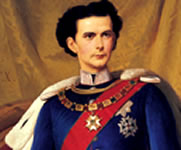Different Styles & Periods
- In the beginning was the castle
- A declaration of love to antiquity
- From Renaissance to Romanticism
- Baroque centre of culture and enlightenment
- Baroque magnificence
- Baroque gardens in the north
- Palatine baroque and Francophile elegance
- Late-baroque treasure troves
- Baroque to Biedermeier in Berlin and Brandenburg
- The Golden Age of Classicism
- Jewels of historicism
- Neo-Gothic romanticism
Palatine baroque and Francophile elegance
Elector Palatine Carl Theodor (1724 – 1799), a lover of luxury and the fine arts, had stunning baroque palaces and parks built in the French style. Under him Mannheim and the Palatinate enjoyed their "golden age". Carl Theodor had Mannheim Palace finished, extended Schwetzingen Palace into a beautiful summer residence and established, for example, the National Theatre and the Academy of Sciences. With their blend of piety and joie de vivre, baroque and Enlightenment, these magnificent buildings reflect the spirit of his age.
Schwetzingen Palace
Show on map »
Benrath Palace & Park, Düsseldorf
Show on map »
Mannheim Palace
The construction of Mannheim Palace on the Upper Rhine, one of the largest absolutist baroque palaces, began under Elector Carl Philipp in 1720. After Carl Philipp's death in the mid-18th century, he was succeeded by Carl Theodor, his only male blood relation, a lover of sciences and the arts under whom the Mannheim Court enjoyed a short, intensive golden age. In particular, Carl Theodor's love of the German language and passion for the theatre led to the foundation of the National Theatre in 1778. Building work - including contributions by the eminent Balthasar Neumann and Nicolas de Pigage - continued on the vast palace complex for around forty years. The palace has now reopened to the public after extensive restoration work.
Show on map »
Show on map »
Travel Planner
Select an option...
Location
- Schwetzingen Palace
- Benrath Palace & Park, Düsseldorf
- Mannheim Palace






